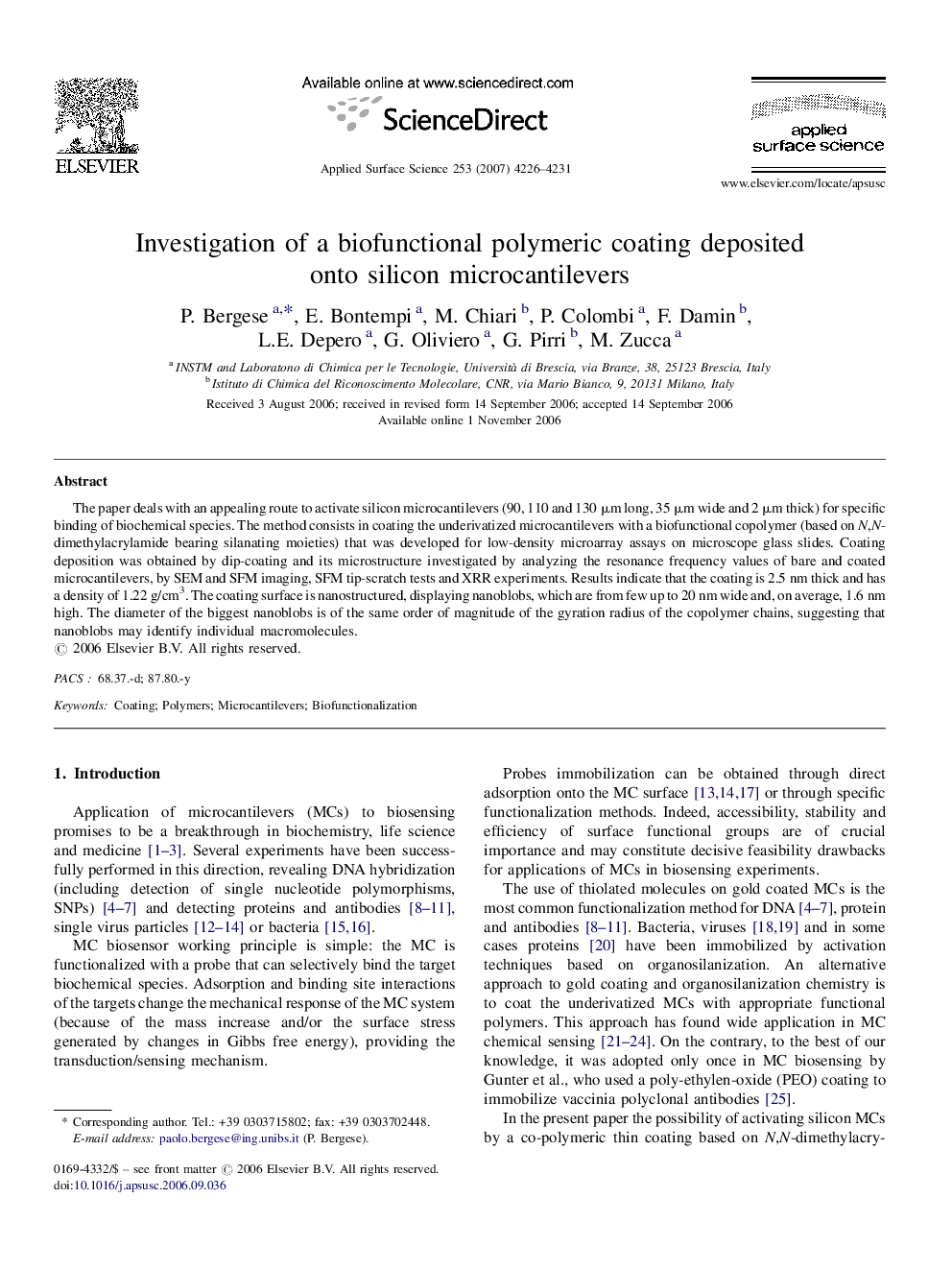| Article ID | Journal | Published Year | Pages | File Type |
|---|---|---|---|---|
| 5369790 | Applied Surface Science | 2007 | 6 Pages |
The paper deals with an appealing route to activate silicon microcantilevers (90, 110 and 130 μm long, 35 μm wide and 2 μm thick) for specific binding of biochemical species. The method consists in coating the underivatized microcantilevers with a biofunctional copolymer (based on N,N-dimethylacrylamide bearing silanating moieties) that was developed for low-density microarray assays on microscope glass slides. Coating deposition was obtained by dip-coating and its microstructure investigated by analyzing the resonance frequency values of bare and coated microcantilevers, by SEM and SFM imaging, SFM tip-scratch tests and XRR experiments. Results indicate that the coating is 2.5 nm thick and has a density of 1.22 g/cm3. The coating surface is nanostructured, displaying nanoblobs, which are from few up to 20 nm wide and, on average, 1.6 nm high. The diameter of the biggest nanoblobs is of the same order of magnitude of the gyration radius of the copolymer chains, suggesting that nanoblobs may identify individual macromolecules.
